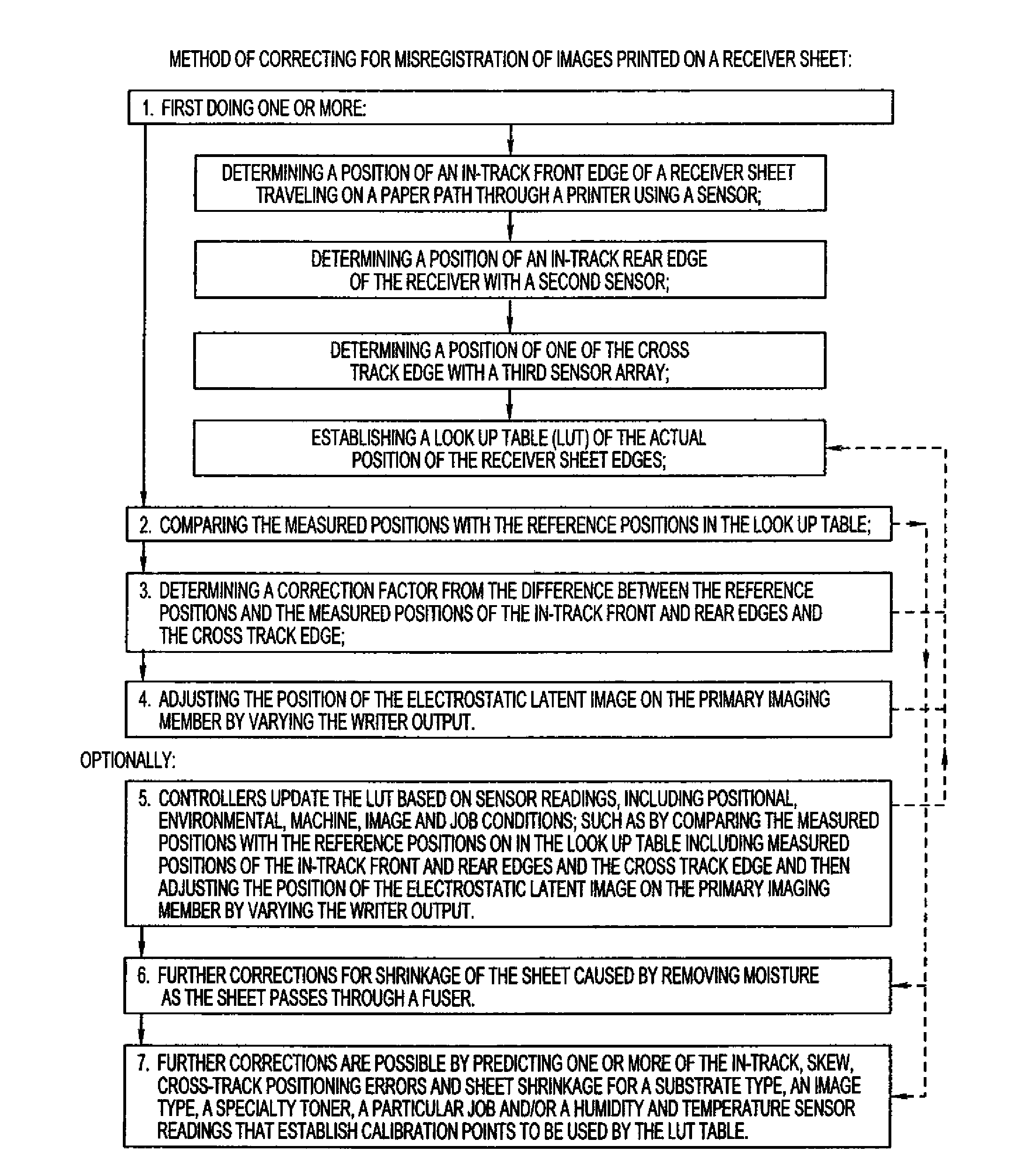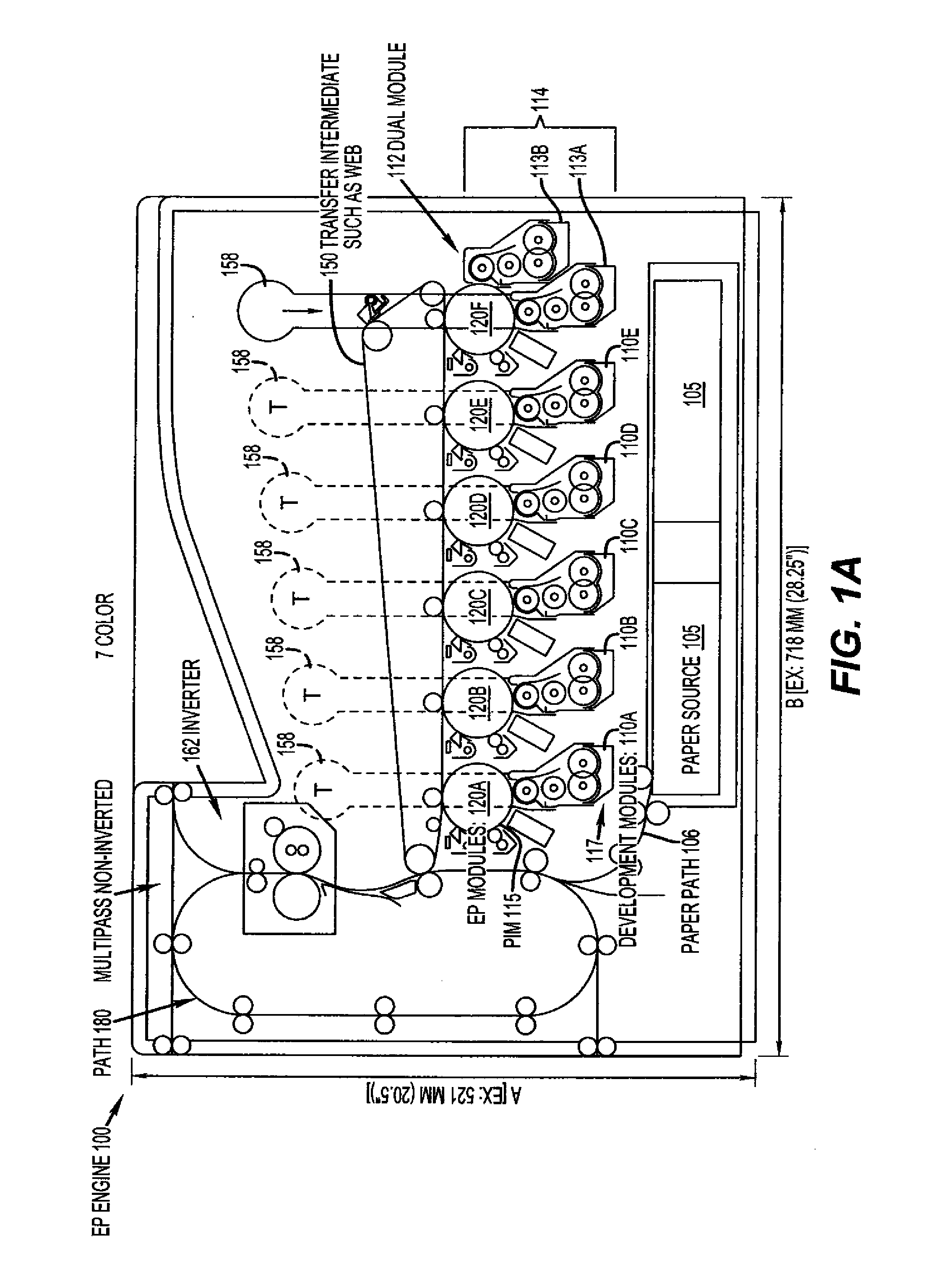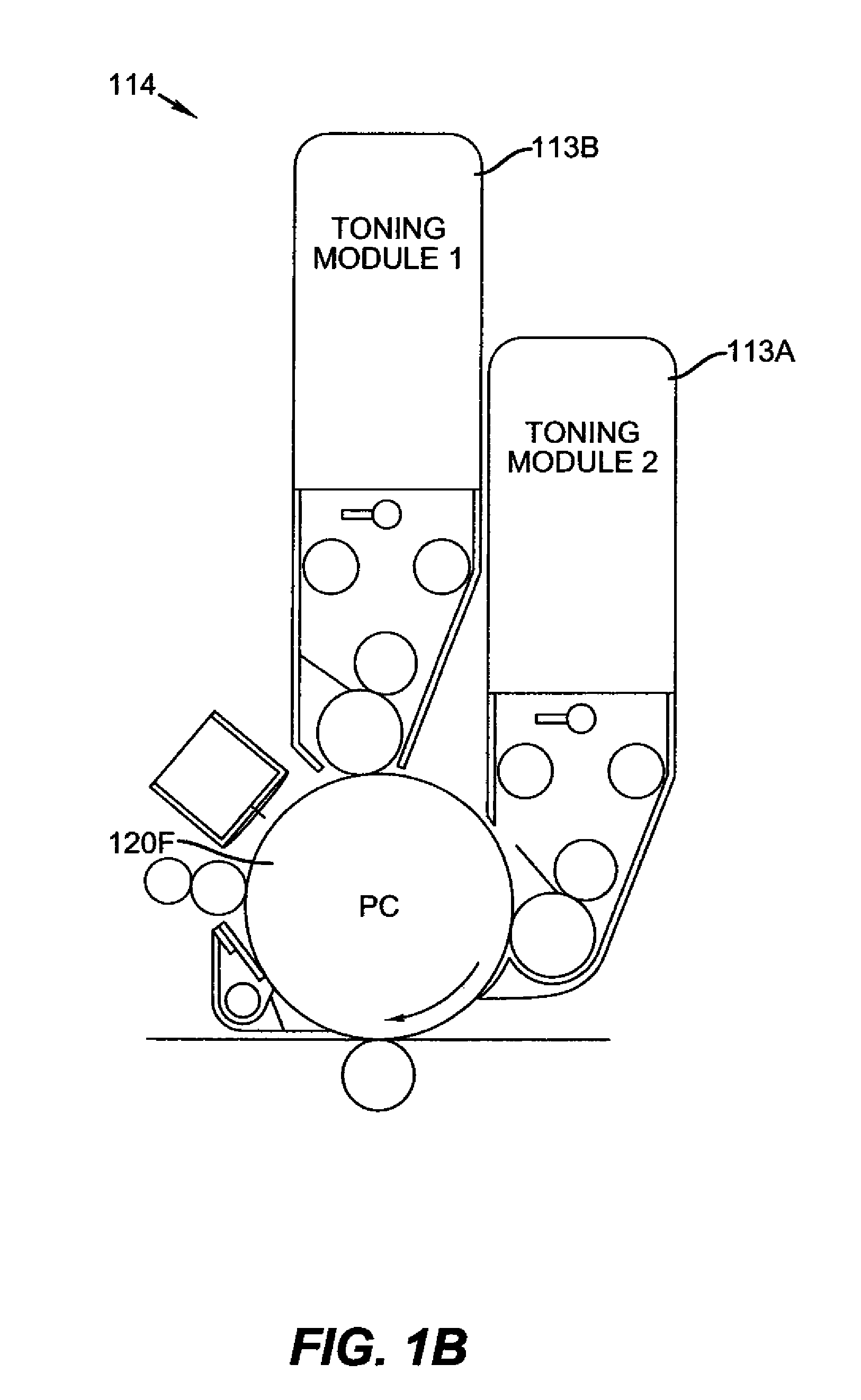Sheet registration for a multipass electrophotographic printer
a multi-pass electrophotographic printer and sheet registration technology, applied in the field of electrophotographic print engines, can solve the problems of inability to print colors that contain vivid reds or greens, the size of such a cylinder is prohibitively large and expensive, and the electrophotographic printers have other limitations, so as to improve the color gamut, enhance gloss, and provide abrasion resistance
- Summary
- Abstract
- Description
- Claims
- Application Information
AI Technical Summary
Benefits of technology
Problems solved by technology
Method used
Image
Examples
Embodiment Construction
[0022]FIG. 1 shows a electrophotographic (EP) engine (100) or printer, often referred to as a tandem print engine including EP modules (110A, 110B, 110C, 110D, and 110E), wherein each contains a single primary imaging member (115A, 115B, 115C, 115D, and 115E) and a single development station (117A, 117B, 117C, 117D, and 117E) to print on receiver 111. In addition, a sixth EP module (112) is shown containing development stations 113A and 113B which form a multi-development station 114. The EP printer is shown having dimensions of A×B which are around in one example, 52×718 mm or less. FIG. 2 shows a slightly larger printer where B is expanded to accommodate the second multi-development engine. This new engine is designed so that the multi-development stations are able to be incorporated into a smaller engine using larger imaging members than are normally used. Development stations 110A though 110E would typically contain toner (T) that is typically used in most color prints. For exam...
PUM
 Login to View More
Login to View More Abstract
Description
Claims
Application Information
 Login to View More
Login to View More - R&D
- Intellectual Property
- Life Sciences
- Materials
- Tech Scout
- Unparalleled Data Quality
- Higher Quality Content
- 60% Fewer Hallucinations
Browse by: Latest US Patents, China's latest patents, Technical Efficacy Thesaurus, Application Domain, Technology Topic, Popular Technical Reports.
© 2025 PatSnap. All rights reserved.Legal|Privacy policy|Modern Slavery Act Transparency Statement|Sitemap|About US| Contact US: help@patsnap.com



